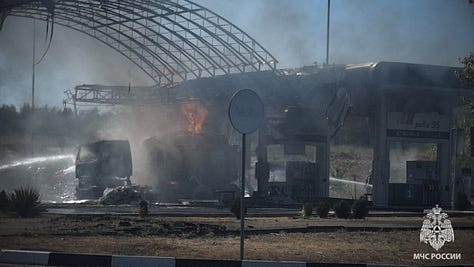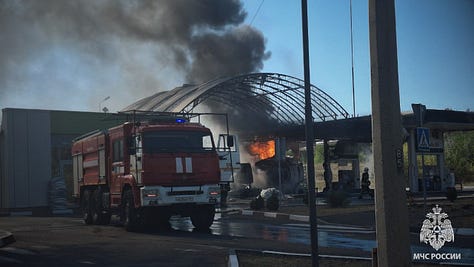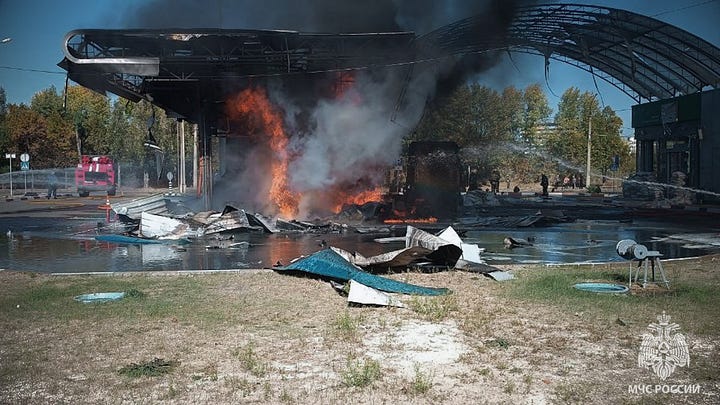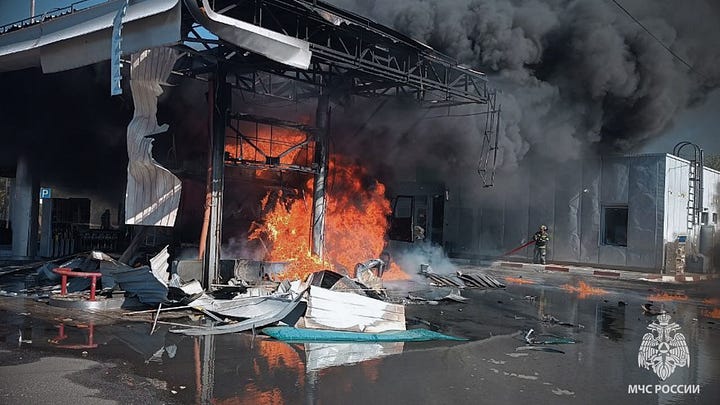Commentary-themed posts tend to deal with recent developments. These will typically be much shorter and less detailed than my analysis-themed posts, for which commentary-themed posts may serve as “building blocks.”
I have covered multiple attacks against gas/petrol stations in the Russia-Ukraine War. What is particularly notable about these attacks concerns the use of armed “first-person video” (“FPV”) multirotor drones as miniaturized strike munitions in highly surgical micro-level attacks against specific nodes of local energy storage and distribution, among other target types. The following video and images document an apparent Ukrainian attack on a gas/petrol station in Severodonetsk, which is located in Russian-occupied Luhansk province. According to local reports, the video records the third recent attack on a gas/petrol station in Russia-occupied Luhansk province, a dynamic that may indicate that this incident is part of a concerted campaign and possibly a Ukrainian emulation of what had until recently appeared to have been a Russian practice.





The images and videos record major damage to this particular gas/petrol station, which was located some 26 kilometers from the frontlines. The only sensible targets—discrete aimpoints—at a gas/petrol station for a quite small and light uncrewed aircraft-turned-munition that is equipped with a small and light warhead with limited destructive effects and a limited destructive radius are: individual fuel pumps, above ground fuel storage, underground fuel storage tanks, and the likes of propane cylinders that are often sold at gas/petrol stations. This Ukrainian attack, however, involved an attack on a different target that is only occasionally found at a gas/petrol station: a tanker truck which, if successfully attacked, will likely result in extensive secondary damage to an entire gas station, a target that will ordinarily have to be attacked by multiple armed “FPV” multirotor drones or, alternatively, a much larger and heavier munition, in order to be subject to such extensive damage.
It is unclear whether this attack—which was reportedly the third such attack against a gas/petrol station in Russian-occupied Luhansk province in recent days—was a preplanned attack or a target of opportunity. Unlike their Russian counterparts, the Ukrainian drone crew involved in this attack selected a very lucrative target that is not always found at a gas/petrol station. Supposing that this was a preplanned attack intended to specifically attack a more “destructive” target that would result in greater secondary damage, this incident highlights the importance of measures to protect critical nodes of local energy storage and distribution against inexpensive and, as such, plentiful armed “FPV” multirotor drones and similar that can be readily employed as miniaturized strike munitions.
I have covered the targeting of gas/petrol stations with armed “FPV” multirotor drones in several recent posts:






